The top 11 Japanese summer festivals according to travellers
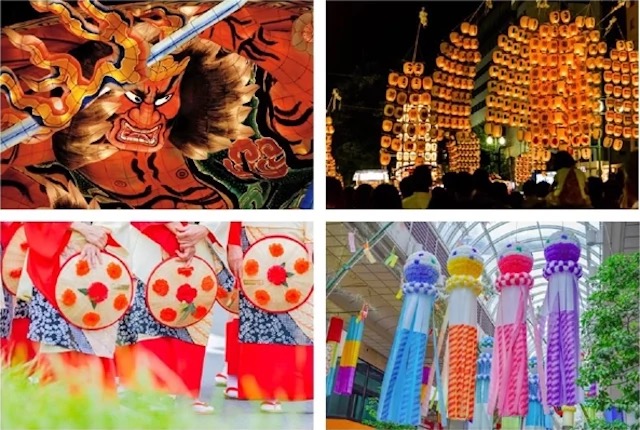
Mark your calendars for these spectacular festivals!
In Japan, local festivals are held throughout the year, but it’s in summer when they really shine, as summer holidays mean people can enjoy some much-needed time off from work, university or school, giving them more time to travel and experience some of the best festivals in the country, often with fireworks and yukata summer kimono in the mix as well.
A summer festival is a quintessentially Japanese event that everyone should experience at least once in their lifetime. So if you’re lucky enough to be travelling in the country at this time of year, which are the best festivals to go to?
That’s a question travel specialist Hankyu Travel International is here to answer, with their “Japanese Summer Festival Ranking”, based on the number of applicants for their summer festival-related tours last year. While there are eight rankings in total, the top entry is a little unique as it bundles four different festivals together, so let’s get to it and take a look at all 11 results, complete with current dates for when the festivals will be held in 2023.
8. Gozan Okuribi — Kyoto — 16 August
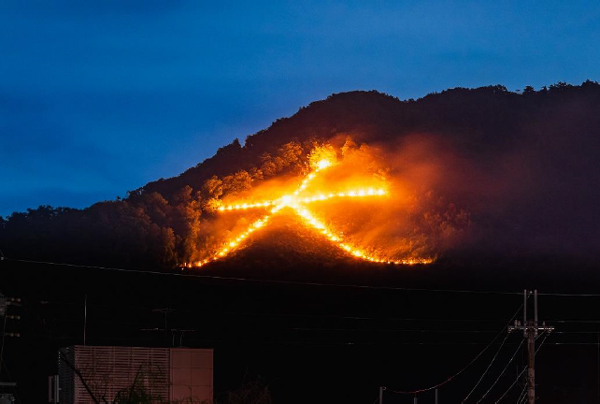
During summer, Japan celebrates a week-long holiday known as “Obon“, which is when ancestors are believed to visit from the afterlife. Families light fires to help guide the spirits back to them, and in Kyoto, “gozan” (“five mountains”) are lit at the end of the holiday as an “okuribi” (“sendoff”) to help guide the deceased back to heaven.
Starting at 8:00 p.m., each of the five mountains in various parts of Kyoto light up in succession, starting with the kanji for “large” or “great” (“大”) on one mountain, followed by the kanji for “wondrous Dharma” (“妙法”) on another mountain, then an image of a boat on another, the kanji for “large” or “great” (“大”) on another, and then the image of a torii shrine gate on the final mountain.
During the pandemic, the number of fires was temporarily reduced, but in 2022 the fires returned on a normal scale, and now that international tourists are returning to Japan, this year’s event looks set to be bigger than ever.
7. Morioka Sansa Odori — Iwate — 1-4 August
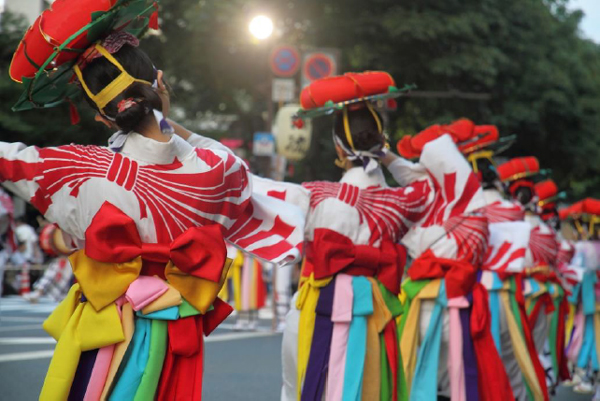
The Morioka Sansa Odori Festival is a grand parade of drums, flutes, songs, and dancers, accompanied by chants of “Sakkora Choiwayasse!” which is a call for good fortune. The catchphrase for the festival is “Come, watch, be enchanted, join”.
The taiko drum parade is a particularly big highlight, as it’s said to be the world’s largest taiko drumming parade, and in 2014 it was certified by the Guinness World Records as the Largest Japanese Drum Ensemble, with 3,437 people playing Japanese drums at the same time.
6. Yosakoi Naruko Odori — Kochi — 9-12 August

This festival originated in Kochi Prefecture in 1954 as a way to pray for the health and prosperity of citizens and to help promote the shopping district. Each team performs a unique dance in their own costume, with everyone using naruko (wooden hand clappers), and one team is awarded the winner on the final day of the festival.
5. Goshogawara Tachineputa — Aomori — 4-8 August
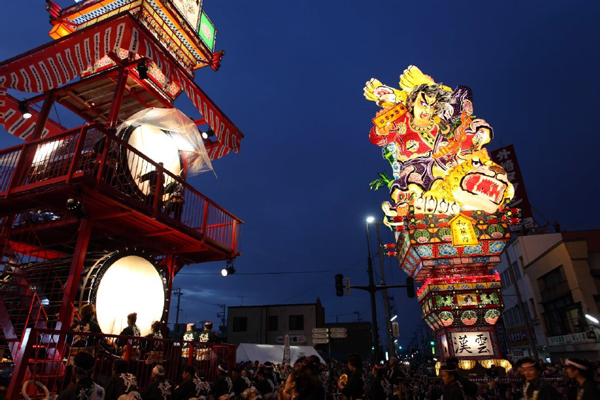
This event is famous for its giant Tachineputa, which can reach a maximum height of 23 metres (75.5 feet). The displays here are narrower than those seen at Aomori’s more famous summer festival, the Aomori Nebuta Festival, but they’re equally as awe-inspiring.
Three large Tachineputa floats and a small Neputa float run through the city of Goshogawara along with music, dances, and chants of “Yattemare! Yattemare!” Those who aren’t in town for the festival can always stop by the Tachineputa Museum, where you can see the impressive floats on display at other times of the year.
4. Gion Festival — Kyoto — 1-31 July
 Image ©SoraNews24
Image ©SoraNews24
The Gion Festival is a famous festival held at Yasaka Shrine that’s said to have started 1,100 years ago. The festival runs for the whole month of July, with various events such as Mikoshiarai (portable shrine washing) drawing huge crowds.
The highlight, however, is the Yamahoko Parade, filled with floats known as “yamahoko” which are so gorgeously decorated they’ve been dubbed “moving art museums.” The parade was suspended during the pandemic and returned last year on a smaller scale, making 2023 the first time it’s been seen in its pre-pandemic glory for a number of years.
3. Awa Odori — Tokushima — 12-15 August
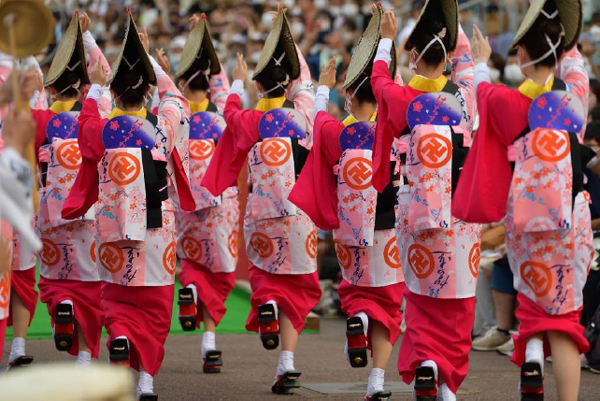
Tokushima’s Awa Odori consists of three types of dances: the “male dance” that expresses dynamism and bravery, the “female dance” that expresses graceful and elegant charm, and the “children’s dance”, which is lively and fun. In addition, the dancers are divided into groups called “ren”, and spectators can enjoy the different costumes and dance styles of every group.
Awa Odori is performed in various places in Tokushima Prefecture, but the representative Awa Odori is performed in Tokushima City. It’s a large-scale festival with a turnout of about 1.3 million people, including 100,000 dancers.
2. Owara Kaze no Bon — Toyama — 1-3 September
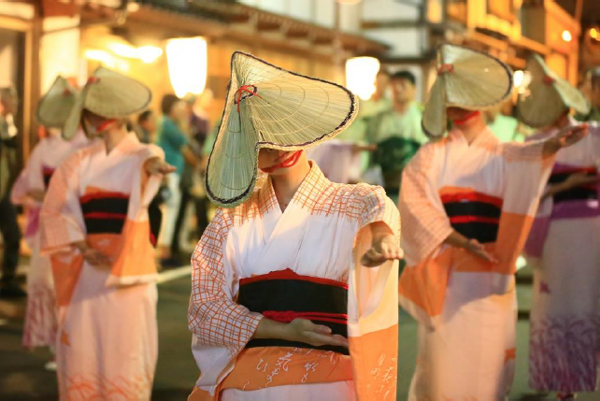
Owara Kaze no Bon is a traditional event held in Yatsuo with a mysterious atmosphere and a history that stretches back 300 years. Men and women in yukata and happi coats wear woven hats and dance to the melancholic Owarabushi song for three days and three nights.
There are various theories about the origins of the word “Owara”, with some saying it refers to “oowarai” (“great laughter”), while others say it stems from the word “oowara” (“large straw”) or an old place name “Owaramura” (“Owara Village”).
“Kaze no Bon” translates to “Obon Dance of the Wind”, and because there are many typhoons at this time of year, the festival is said to have originated as a way to avoid typhoons and pray for a good harvest.
1. Four Great Tohoku Festivals
As promised, the top entry in this list is a bit of a whopper, as it consists of four different festivals often referred to as the Four Great Tohoku Festivals. Let’s take a closer look at each of them below, starting with three that are collectively known as the Three Great Tohoku Festivals.
Nebuta Festival — Aomori — 2-7 August
This lively festival is world-renowned for its giant, brightly lit nebuta floats. Like many summer festivals, this year’s iteration is back to its pre-pandemic glory, and dancers will be participating for the first time in a number of years.
Kanto Festival — Akita — 3-6 August
Another truly stunning festival, this one features dozens of paper lanterns, held aloft on heavy 12-metre poles which participants miraculously balance on their palms, shoulders, hips, and foreheads.
Tanabata Festival — Sendai — 6-8 August
The Sendai Tanabata Festival is one of Japan’s leading Tanabata festivals. The traditional event celebrates the celestial meeting of two deities, Orihime and Hikoboshi, lovers separated by the Milky Way who are allowed to meet once a year on the seventh day of the seventh month of the lunar calendar. Dating back to the early Edo period (1603 – 1868), the Sendai Tanabata Festival is known for its extravagant decorations that line the streets of the city, and one year cats were even featured in the festivities.
▼ Nebuta Festival (top left), Kanto Festival (top right), Tanabata Festival (bottom right)

If you’ve got Three Great Tohoku Festivals, which are often cited as the best summer festivals in all of Japan, why not include even more? They certainly know how to celebrate in this northern region, and another festival is so grand it’s been dubbed worthy of inclusion in a relatively new collective moniker known as the Four Great Tohoku Festivals.
Hanagasa Festival — Yamagata Prefecture– 5-7 August
At this festival, each group wears the same yukata and holds a hat decorated with five or six flower decorations (bottom left in the image above). Due to COVID restrictions, only half the usual number of dancers took part in the festivities in 2022, but this year, the full number of participants will be there to entertain the crowds.
So there you have it — 11 amazing summer festivals that are definitely worth visiting while you’re in Japan. One of the great things about this list is none of these events have taken place yet, so if you’ve been looking for a way to experience the true essence of summer in Japan, you still have time to fit them into your itinerary.
And if you’re in Japan at the beginning of August, you’ll be able to experience all Four Great Tohoku Festivals in less than five days if you plan accordingly. Although with all the beauty up there in the Tohoku region, you might want to stay much longer!
Source, images: PR Times unless otherwise stated
● Want to hear about SoraNews24’s latest articles as soon as they’re published? Follow us on Facebook and Twitter!
Credit:

0 comments:
Post a Comment